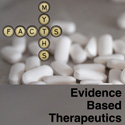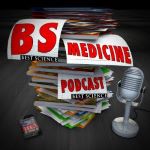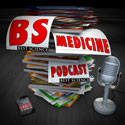In episode 95, Mike and James look at the issue of non-specific low back pain and deal with concepts around diagnosis and we find out that x-rays aren’t that useful but MRI’s in the right patient population can play a role. We then start to look at the available evidence for treatment (massage, acupuncture, spinal manipulation) and at the end Mike tries to give James a two-handed neck massage and in retaliation James does acupuncture on Mike with a harpoon.
Show notes
1) Guidelines on back pain
TOP Back Guideline
American College Guideline
Ann Intern Med 2007; 147:478-91
Ann Intern Med 2007;147:505-14 (meds)
Ann Intern Med 2007;147:492-504 (non-meds)
Summary of guidelines
BMJ 2006; 332:1430-4
Evidence-based Series (non-medication) on Back Pain
Spine 2009, 34:1066-77 and 1078-93 and 1094-1109
2) Imaging – x-ray, CT and MRI
BMJ 2001;322:400-5
Lancet 2009;373:463-72
JAMA 2003;289:2810–8
MRI likelihood ratios
| Condition |
Positive Likelihood ratio |
Negative Likelihood ratio |
| Herniated Disc |
1.1 – 33 |
0 – 0.93 |
| Stenosis |
3.2 – ? |
0.1 – 0.14 |
| Cancer |
8.3 – 31 |
0.07 – 0.19 |
| Infection |
12 |
0.04 |
Ann Intern Med 2002;137:586-97
BMJ 2006;332:1430-4
Ann Intern Med 2007;147:478-91
4) Massage
Cochrane 2008; 4: CD001929
5) Acupuncture
Ann Intern Med. 2005 Apr 19;142(8):651-63
Cochrane 2005; 1:CD001351
6) Spinal manipulation
Cochrane 2004; 1: CD000447



